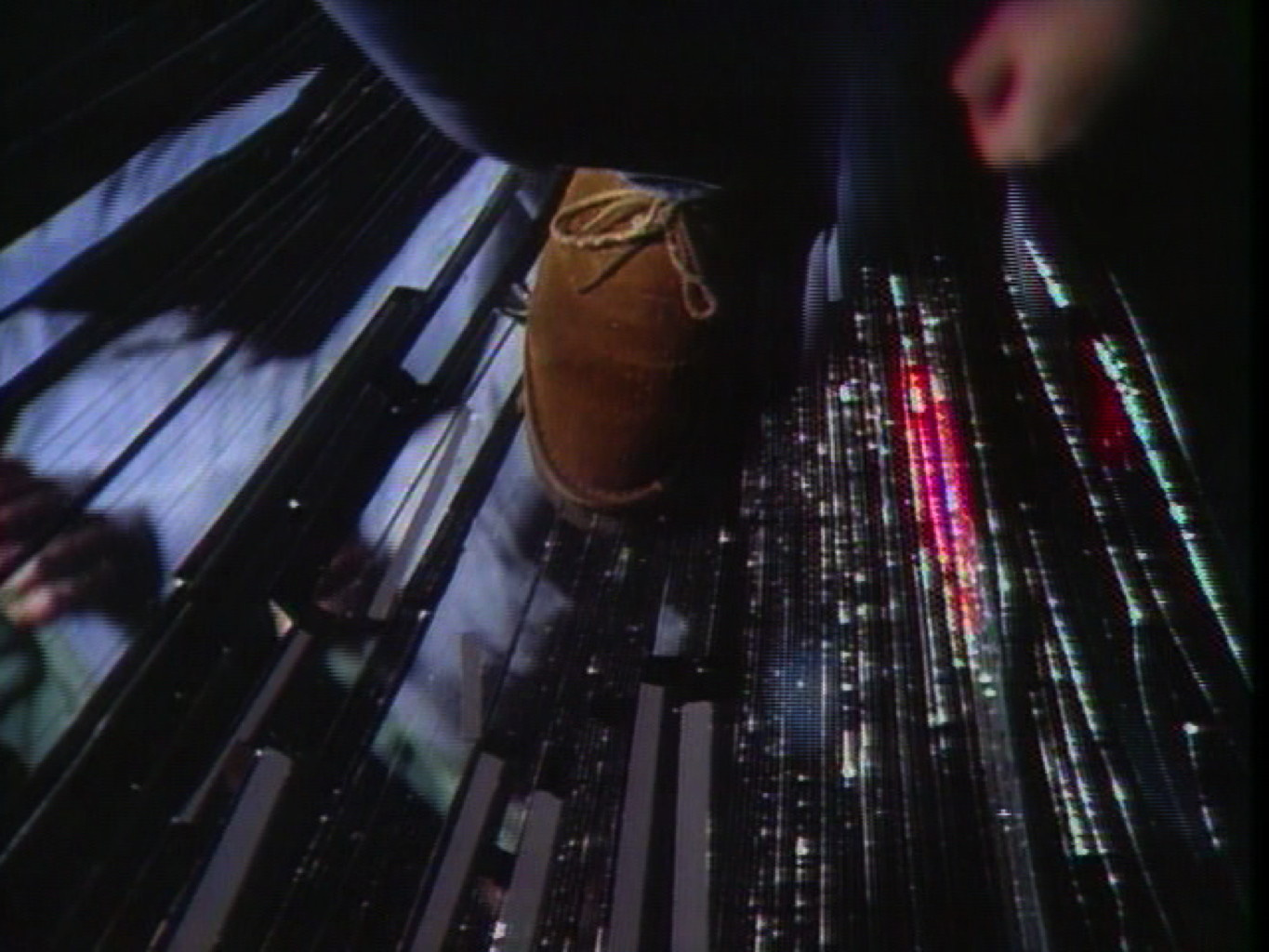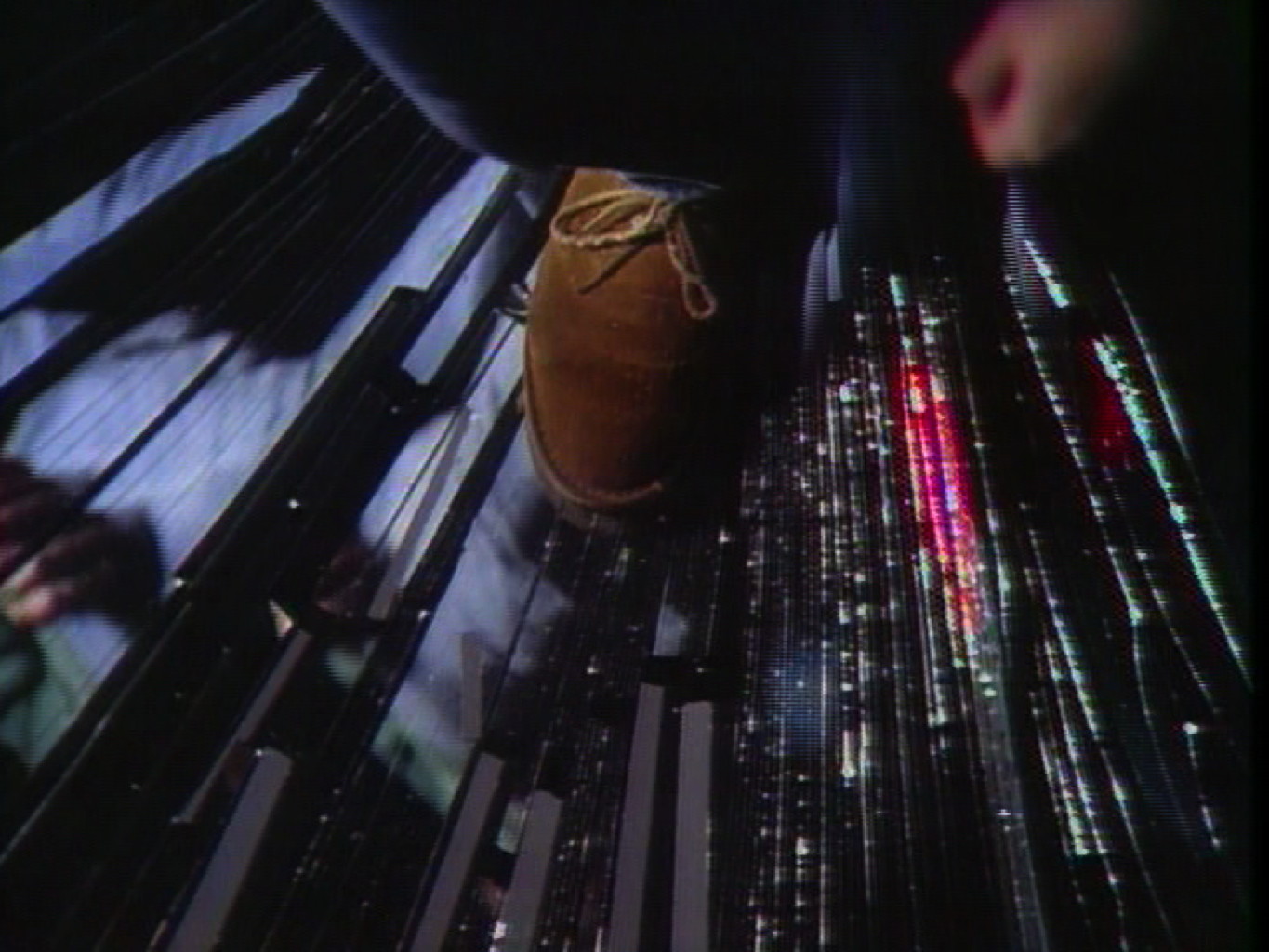- Title
- Four Sided Tape
- Year
- 1976
- Category
- Video
- Format
- Analog video
- Material / Technique
- Betacam SP, color, mono
- Dimensions / Duration
- 00:03:20
- Contributors
- Darsteller/in
- Schnitt
- Schnitt
- Kamera
- Kamera
- Description
- »Four Sided Tape«, along with »East Ended Tape« and »Third Tape«, is the first part of a trilogy that Peter Campus made in 1976 at the New Television Workshop of the WGBH television station in Boston, USA. At the beginning of the video, the camera captures a foot stepping onto a mirrored surface from above. After a firm step, the mirror shatters, resulting in fragmentation of the image. In the next two sequences, Campus experiments with chroma key technique, a visual effect in which blue paint is used to create a blank space in the video image onto which other images can then be superimposed.
First, we see the artist’s body. The body is torn apart by the artist’s hands, as though it were made of paper. In fact, what the artist is tearing is blue paper, which remains invisible due to the chroma key technique. Next, we see Campus’s head, but rotated 180°. He pulls on a blue cap until his face disappears. In the blank space, a video of his head appears, this time the right way round. Campus repeats the action, again pulling a blue cap over his head. His head disappears into the blackness of the image. Lastly, a hand dips into a viscous black mass that seems to suggest the artist has disappeared into a similar substance.
Campus playfully explores the possibilities of chroma key. By applying this process to self-portraiture, he translates one of the central motifs of Western art history into the present day. That filming one’s own body became a central phenomenon in the artistic exploration of video technology was also an effect of the technology itself. Unlike film, video made it possible to see the recording in real time and — similar to a mirror — to react to it immediately.

